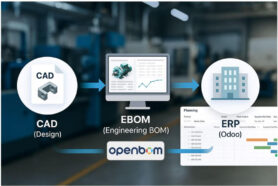
Everyone knows that China is the global manufacturing powerhouse of the world that attracts business from all around the world. The country’s robust infrastructure, skilled workforce, and expansive industrial capabilities have positioned it as a key player in the international manufacturing landscape. As a result, companies find it difficult to manufacture in other countries that might have cheaper labor or that are closer to their homeland.
Any company that is transitioning from product development to production, needs to think of its manufacturing strategy. The success of a company depends on the quality of your product and the way you proceed with building your product will dictate the end result of your product.
In this blog, we will provide a roadmap for first-time manufacturers in China. We will go over the 5 best practices for manufacturing in China.
1. Establish Clear Communication Channels:
In any business, communication is very important. In manufacturing, it is no different. The distance, both geographical and cultural, between your business and your manufacturing partners in China underscores the need for precise and transparent communication. Misunderstandings can lead to production delays, quality issues, and, ultimately, impact the success of your venture.
Utilize Project Management Tools
Embrace technology to bridge the communication gap. Project management tools and messaging apps (such as WeChat) are the best way to provide updates and answer any questions in real-time.
Clearly Articulate Specifications, Expectations, and Timelines
Clarity is key when offering requirements to manufacturing partners in China. Clearly articulate product specifications, quality standards, and any specific expectations you may have. Timelines for production milestones and delivery should be explicitly defined to avoid any ambiguity.
Consider Language and Cultural Considerations:
Acknowledge and address language and cultural differences early in the communication process. Misinterpretations can arise and impact the effectiveness of communication. Consider employing bilingual project managers or interpreters to facilitate smoother interactions.
2. Quality Assurance and Control
In manufacturing, maintaining high-quality standards is non-negotiable. For first-time manufacturers in China, ensuring that your products meet stringent quality benchmarks is not just a matter of reputation but a foundational element for sustained success. Implementing robust quality assurance and control measures is key to guaranteeing the integrity of your products.
Set Comprehensive Quality Standards and Specifications
Begin by defining clear and comprehensive quality standards and specifications for your products. This detailed documentation serves as a reference point for both your team and your manufacturing partners in China. Be explicit about materials, dimensions, tolerances, and any other critical parameters that define the quality of your end product.
Implement Robust Quality Control Processes
Quality control is not a one-time event; it’s a continuous process embedded throughout the manufacturing lifecycle. Establish checkpoints and inspection processes at key stages, from raw material acquisition to final product assembly. Regular and thorough inspections help identify and rectify potential issues before they escalate.
Conduct Regular Audits and Inspections
Beyond in-process quality control, conduct periodic audits and inspections of your manufacturing partners’ facilities. These on-site visits provide firsthand insights into production conditions, adherence to standards, and overall manufacturing practices. Regular audits are instrumental in maintaining transparency and accountability.
3. Build Strong Relationships with Suppliers
In the intricate web of manufacturing, the relationships you cultivate with your suppliers can significantly impact the success of your venture. Building strong and collaborative partnerships with your manufacturing counterparts in China goes beyond transactional interactions; it establishes a foundation of trust, transparency, and mutual benefit.
Visit Manufacturing Facilities in Person
Virtual communication is invaluable, but there’s no substitute for a firsthand understanding of your suppliers’ capabilities. Whenever possible, schedule visits to the manufacturing facilities in China. This not only allows you to witness the production processes but also fosters a personal connection with the people responsible for bringing your products to life.
Develop Open and Transparent Communication Channels:
Transparency is the bedrock of a successful supplier relationship. Establish open communication channels where both parties can freely discuss challenges, opportunities, and expectations. Encourage a culture of transparency that allows for the early identification of issues and collaborative problem-solving.
4. Navigate Regulatory Compliance:
Operating in a global marketplace necessitates a keen understanding of regulatory landscapes. For manufacturers in China, compliance with both local regulations and international standards is a cornerstone of sustainable and legally sound business operations. Navigating the complex web of regulations ensures that your products meet quality benchmarks and adhere to legal requirements.
Research and Understand Chinese Regulations
Begin by conducting thorough research on the specific regulations governing your industry in China. From product safety standards to environmental regulations, a comprehensive understanding of the local legal landscape is indispensable. Engage legal experts with knowledge of Chinese law to guide you through the intricacies of compliance.
Ensure Product Compliance with International Standards
Beyond local regulations, many industries adhere to international standards to ensure product quality and safety. Identify and comply with these standards to enhance the marketability and acceptance of your products on a global scale. This may include certifications such as ISO, CE, or industry-specific standards.
5. Plan for Supply Chain Resilience
In an interconnected global economy, the ability to adapt and respond to disruptions is paramount. For manufacturers in China, building a resilient supply chain is not just a strategic choice but a necessary approach to navigate uncertainties such as geopolitical shifts, natural disasters, and market fluctuations. A resilient supply chain ensures continuity, minimizes risks, and positions your business for long-term success.
Diversify Suppliers and Components
Overreliance on a single supplier or component can expose your supply chain to vulnerabilities. Diversify your supplier base and sources of raw materials or components to reduce dependency on a single source. This strategic approach not only mitigates risks but also provides flexibility in responding to changes in market conditions.
Develop Contingency Plans for Disruptions
Contingency planning is essential for maintaining operational continuity in the face of disruptions. Anticipate potential challenges such as transportation delays, geopolitical events, or natural disasters. Develop comprehensive contingency plans that outline alternative routes, suppliers, and manufacturing facilities to mitigate the impact of unforeseen events.
Build Flexibility into the Supply Chain
A flexible supply chain adapts to changing market dynamics and unexpected events. Foster agility by implementing lean inventory management, adopting technologies that enhance visibility, and maintaining open communication channels with suppliers. A responsive and agile supply chain is better equipped to adjust to fluctuations in demand and supply.
Conclusion
In the dynamic landscape of Chinese manufacturing, the transition from product development to production demands strategic navigation.
From clear communication channels to ensuring stringent quality control, building robust supplier relationships, navigating regulatory compliance, and fortifying supply chains — each practice is a vital pillar for success.
In this journey, managing your product data becomes increasingly important, and tools like OpenBOM play a pivotal role. OpenBOM provides the infrastructure for seamless collaboration, transparency, and real-time visibility across your entire product lifecycle.
As you embark on your manufacturing journey in China, these practices, coupled with effective product data management through OpenBOM, serve as a guide. Empowered with a centralized data hub, you can navigate complexities and streamline processes, enhance collaboration, and ensure data accuracy.
Welcome to start your digital transformation journey where challenges are opportunities, and success is crafted through innovation, resilience, and lasting partnerships.
Join our newsletter to receive a weekly portion of news, articles, and tips about OpenBOM and our community.











